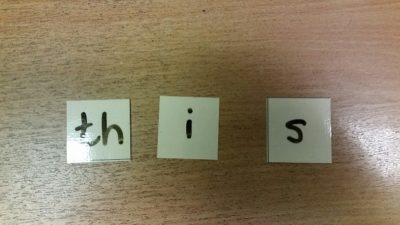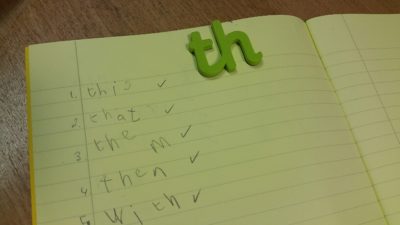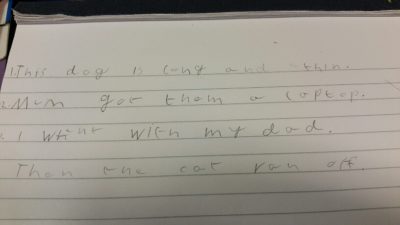High-frequency words are common words in the English language. Many teachers believe that it is useful for children to learn to read and spell these words as soon as possible. The problem is that many of these words have complex spellings. This means that children may find it difficult to read and spell them until they have been introduced to the spellings in those words.
Teachers may resort to asking children to learn these words as whole words by their shape. It is no surprise that many children struggle to learn these words and, if they do manage to learn them for a spelling test, they soon forget them. Learning to spell words by shape is an inefficient way to store this information. It is also an unnecessary burden on children’s finite memories.
Take the words ‘this’, ‘that’, ‘then’, ‘with’, ‘than’ and ‘them’. They can all be decoded when the child has been taught the relevant grapheme–phoneme correspondence: then, the child can read and spell these words by segmenting them into sounds. The information that needs to be stored in long-term memory is that the grapheme ‘th’ can spell two sounds: ‘th’ as in ‘thin’ (non-voiced) and ‘th’ as in ‘this’ (voiced). These are the only two pieces of new information that need to be stored, instead of having to store all the words with ‘th’ in them as whole shapes.
The best way to teach children is a multi-sensory way. This means getting children to use a number of senses that help them to learn and remember information: seeing, hearing, saying and touching.
Here are a few ways to teach high-frequency words in a phonic and multi-sensory way:
1. Teach the spelling ‘th’. Make sure children know the two sounds of ‘th’.
2. Ask the children to build a word, saying the sounds as they place them in order. Make sure that digraphs are on one card. Now ask the children to blend the sounds together into a word.

3. This can be done with a number of high-frequency words that have the same spelling. This way, children can see the spelling pattern. This could be displayed in the classroom. (Another way to build words is to use magnetic letters.)

4. Ask the children to read the words.

5. Ask the children to spell the words. This could be done at the beginning of a word-building lesson, and later as a word-dictation exercise.

6. Finally, dictate short, simple sentences so the children can spell the words within sentences.



Very helpful instruction. Thank you
This is great. Where did you get theagnetic letters?
Magnetic letters are widely available for sale on Amazon or even in larger supermarkets, however you can buy through an educational distributor such as SmartKids, TTS Group or Consortium Education too.